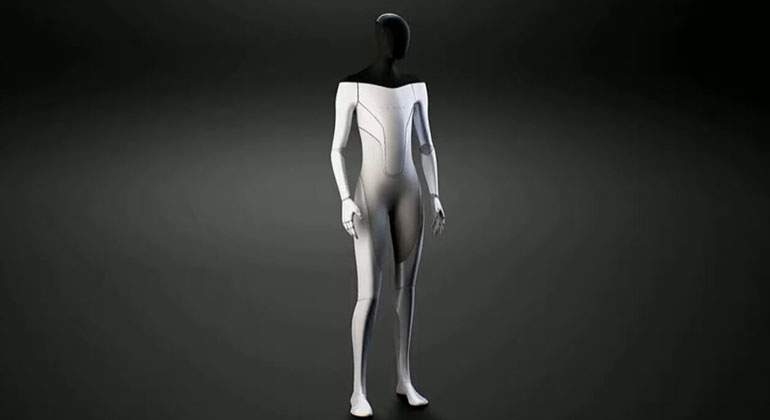In the middle of summer, Elon Musk presented at Tesla’s AI Day – the day in which he advances his developments in artificial intelligence – the Tesla Bot , a humanoid robot still in prototype form but that adds to the wave of automation and the representation of one of the dilemmas of the future: what will happen to jobs when robots are able to do many of them.
Based on the same technology as the company’s semi-autonomous vehicles, the robot will be able to perform repetitive basic tasks with the goal of eliminating the need for people to handle dangerous or boring jobs, Musk said at an online event on the advancements. of Tesla in artificial intelligence (AI).
“Tesla is arguably the largest robotics company in the world because cars are semi-sense robots on wheels,” Musk said. “It makes sense to put that in a humanoid form” and with five-fingered hands.
For now, not much is known about them, beyond Musk advancing that it would serve to perform “repetitive and boring” tasks.
But his presentation has given cause to think, especially due to Musk’s opinions , who several times has positioned himself with his well-known technological optimism for a future in which there are no physical jobs , and even in favor of the minimum income to stop the possible blow to employment that automation may entail.
But what will it do and what activities or jobs can the Tesla Bot really replace? In this regard, Northwestern University robotics professor Michael Peshkin opined in an interview with Popular Mechanics magazine that one should not underestimate how complicated it remains for a robot, no matter how sophisticated, to perform the movements of a robot. human.
“We never appreciate how sophisticated we are. Even the things that babies can do are difficult for robots,” said Peshkin.
Musk mentioned “mundane tasks” like putting screws in or shopping for a delivery boy to carry later, but it seems that this would require a lot of specialized and adaptive programming.
This adds to Musk’s description that the robot receives verbal instructions, adding one more requirement for natural language processing.
Warehouse workers, who could be replaced
Peshkin said the robot Musk describes resembles, perhaps, the jobs human workers perform in an Amazon warehouse. Specifically to the work of moving heavy boxes to conveyor belts.
But the expert cautions, while the term “unskilled labor” is often used for jobs like this, we actually use an incredible amount of multi-level judgment and caution when we do these seemingly simple tasks.
Inserting the robots won’t be cheap
“When you try to automate things that people do, like picking things up off the shelf in a warehouse, you often end up changing the warehouse entirely,” explains Peshkin. “The environment is also often changing. Barcodes are put in, shelves are in standard places, things are packaged differently, all kinds of adaptations are made to make the world safe for robots.” The task is made as uniform as possible so that it can be handled by the robot.
Bolting bolts, as a one-time job, is something robots can do well today. The manufacturing industry has had some of the most advanced robots in the world for decades due to the relatively “achievable” of many of the manufacturing tasks, for example on assembly lines in the automotive sector. But joining that to a movable robot and being able to interpret voice commands already seems more complicated.
“Most of the robotic hands found in the manufacturing industry are metallic , rigid, of limited dexterity, and only a few have more than three fingers,” also states Arizona State University roboticist Heni Ben Amor. Human hands they are profoundly complex, and it would take many motors to create a similar robotic hand.


